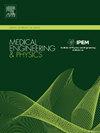两种不同代谢系统在步行过程中测量气体交换的有效性和天间可靠性
IF 1.7
4区 医学
Q3 ENGINEERING, BIOMEDICAL
引用次数: 0
摘要
用于评估实验室和临床环境外气体交换的便携式代谢系统越来越受欢迎。我们的目的是确定K5便携式系统(Cosmed,罗马,意大利)和Omnical(马斯特里赫特仪器,马斯特里赫特,荷兰)代谢车的有效性和可靠性。方法使用K5和omnal以随机和平衡顺序测量35名参与者(19名女性;年龄:26±3岁),采用非连续(间隔48小时)2天的步行方案。该方案包括5分钟步行和2.5分钟休息周期,从3.5 km/h开始,以1 km/h增加到6.5 km/h。休息10-15分钟后重复两次。为了确定效度和信度,我们进行了双因素重复测量方差分析(ANOVA)、类内相关系数(ICC)、变异系数(CV)和Bland-Altman分析。结果重复测量方差分析显示,在两次访问中,K5的平均耗氧量、二氧化碳产量和能量消耗都高于omical (P <;0.001)。呼吸交换率(RER)在步行速度较快(≥4.5 km/h)的系统中相似。与K5 (ICC范围为0.40 ~ 0.98,CV范围为2.6% ~ 6.3%)相比,ICC、CV和Bland-Altman显示出更好的可靠性(ICC范围为0.71 ~ 0.86,CV范围为3.1% ~ 7.1%)。结论K5便携式系统提供的RER值与omical代谢车相似,但大多数结果的omical可靠性更好。本文章由计算机程序翻译,如有差异,请以英文原文为准。
Validity and between-days reliability of two different metabolic systems for measuring gas exchange during walking
Background
Portable metabolic systems for assessing gas exchange outside the laboratory and clinical settings are increasing their popularity. We aimed to determine the validity and the reliability of the K5 portable system (Cosmed, Rome, Italy) and the Omnical (Maastricht Instruments, Maastricht, The Netherlands) metabolic cart.
Methods
Gas exchange was measured, using the K5 and the Omnical in a randomised and counterbalanced order, in 35 participants (19 women; age: 26 ± 3 yrs.) using a walking protocol on 2 non-consecutive (48 h apart) days. The protocol consisted of a 5 min walk and 2.5 min rest cycle starting at 3.5 km/h and increasing in 1 km/h to 6.5 km/h. The protocol was repeated twice after a 10–15 min resting. To determine validity and reliability, we conducted two-factor repeated measures analysis of variance (ANOVA), intraclass correlation coefficients (ICC), coefficients of variation (CV) and Bland-Altman analyses.
Results
Repeated measures ANOVA showed that mean oxygen consumption, carbon dioxide production and energy expenditure were higher for the K5 compared to the Omnical on both visits (all P < 0.001). Respiratory exchange ratio (RER) was similar among systems at faster (≥4.5 km/h) walking speeds. ICC, CV and Bland-Altman showed a better reliability of the Omnical (ICCs ranged from 0.71 to 0.86, and CVs from 3.1 % to 7.1 %) compared to the K5 (ICCs ranged from 0.40 to 0.98, and CVs from 2.6 % to 6.3 %).
Conclusions
The K5 portable system provides similar RER values to the Omnical metabolic cart, although the Omnical reliability was better for most outcomes.
求助全文
通过发布文献求助,成功后即可免费获取论文全文。
去求助
来源期刊

Medical Engineering & Physics
工程技术-工程:生物医学
CiteScore
4.30
自引率
4.50%
发文量
172
审稿时长
3.0 months
期刊介绍:
Medical Engineering & Physics provides a forum for the publication of the latest developments in biomedical engineering, and reflects the essential multidisciplinary nature of the subject. The journal publishes in-depth critical reviews, scientific papers and technical notes. Our focus encompasses the application of the basic principles of physics and engineering to the development of medical devices and technology, with the ultimate aim of producing improvements in the quality of health care.Topics covered include biomechanics, biomaterials, mechanobiology, rehabilitation engineering, biomedical signal processing and medical device development. Medical Engineering & Physics aims to keep both engineers and clinicians abreast of the latest applications of technology to health care.
 求助内容:
求助内容: 应助结果提醒方式:
应助结果提醒方式:


